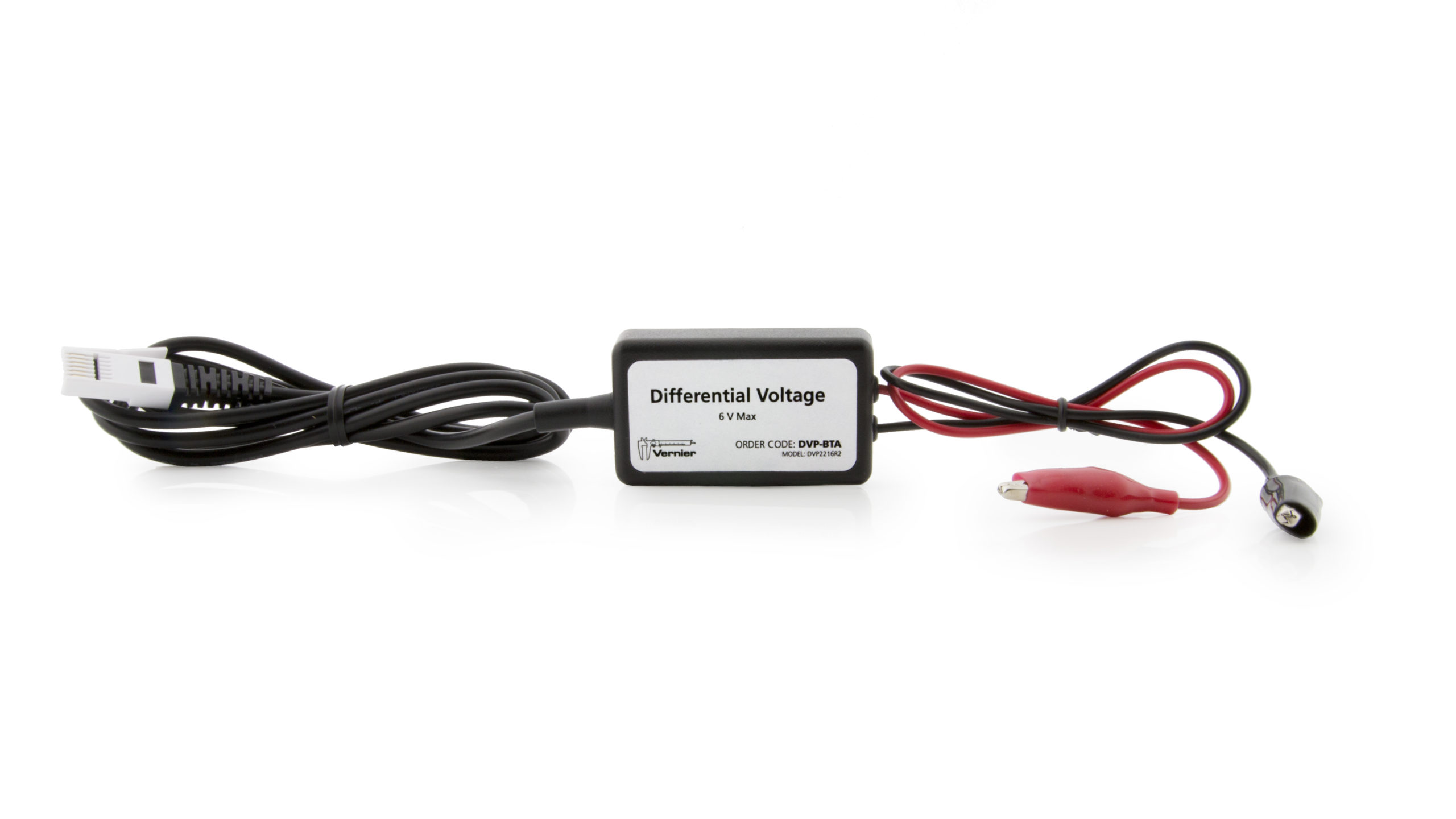Troubleshooting
- Primary Test: Are the leads properly and securely connected? The probe is designed to be used like voltmeter leads. It should be placed across a circuit element.
- Secondary Test: When measuring DC voltages with power supplies, some power supplies do not provide a steady DC signal. If the sensor voltage is fluctuating, try a DC source such as a battery. If the sensor reading is correct, the problem may be the power supply.
- Tertiary test: Is the output appropriate? The differential input range is −6 volts to +6 volts. Over-voltage protection is provided so that slightly higher voltages will not damage the sensor. You should NEVER use high voltages or household AC with these probes.
Additional Troubleshooting
- The readings from my Current and/or Voltage Probe are erratic, but if I measure the voltage with a multimeter instead, I get a solid reading. What is wrong with my sensor?
- What is the difference between a Differential Voltage Probe (DVP-BTA) or Go Direct Voltage Probe (GDX-VOLT) and the simple Voltage Probe (VP-BTA)?
- What is the overvoltage protection on the Differential Voltage Probe and Current Probe?
- What is the accuracy of a DVP-BTA voltage probe?
- There is noise on my INA-BTA or DVP-BTA data when LabQuest is on AC adapter.
- How do I measure voltages larger than 6 (or 10) volts?
- How do I measure currents larger than 0.6 amperes?
- Is it possible to use the Voltage Probe (VP-BTA) when doing an Ohm's Law experiment, or is the Differential Voltage Probe (DVP-BTA) or Go Direct Voltage Probe (GDX-VOLT) required?
- An experiment using the current sensor of the power amplifier (PAMP) gives unexpected results
Specifications
- Input voltage range: ±6.0 V
- Maximum voltage on any input: ±10 V
- Input Impedance (to ground): 10 M Ω
- Differential Impedance: >20 M Ω
- Typical Resolution: 3.1 mV
- Linearity: 0.01%
- Supply voltage: 5 VDC
- Supply current (typical): 9 mA
- Output voltage range: 0 – 5 V
- Transfer function: Vout = -0.4 (V+– V–) + 2.5
Calibration
Calibrate? No. The sensor is set to the stored calibration before shipping.
If you wish to calibrate the sensor, you will conduct a two-point calibration. You may also zero the sensor before collecting data, as an alternative to calibration. This is done by shorting out the leads of the sensor, then choosing the Zero option in the data-collection software. This option adjusts the calibration offset but does not adjust the calibration gain.
Related Products
- Vernier Circuit Board 2 (
VCB2 ) - Current Probe (
DCP-BTA ) - Voltage Probe (
VP-BTA ) - 30-Volt Voltage Probe (
30V-BTA ) - Instrumentation Amplifier (
INA-BTA ) - Go Direct® Voltage Probe (
GDX-VOLT )

